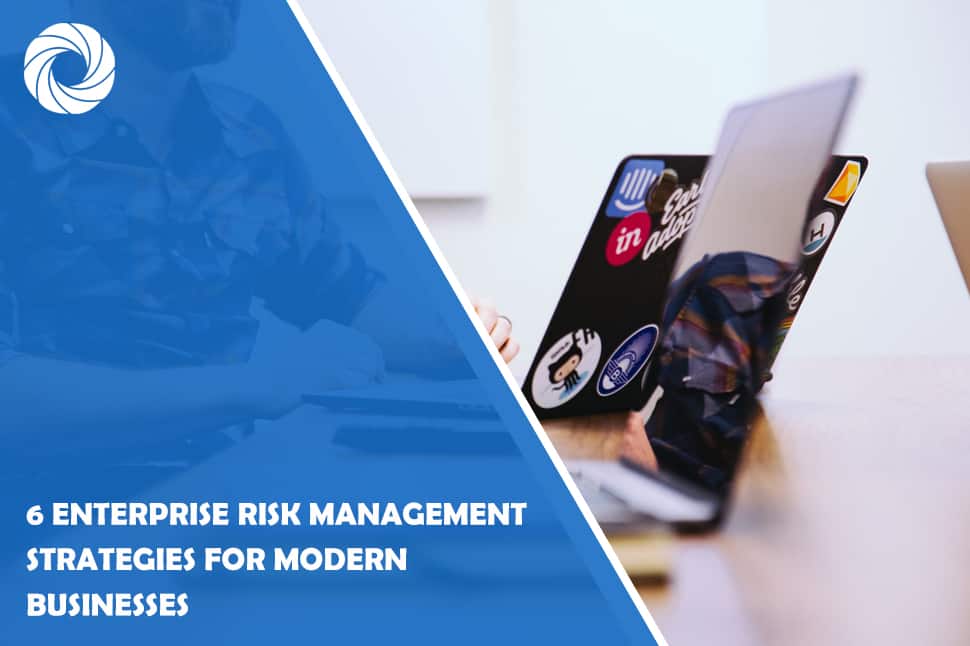Organizations are exposed to a myriad of risks that can negatively impact their operations, reputation, and financial performance. Implementing a comprehensive enterprise risk management (ERM) framework is essential for organizations to effectively identify, assess, and mitigate these risks. In this blog post, we will discuss six key enterprise risk management strategies that businesses can adopt to better manage and mitigate risks.
Establishing a Risk Governance Framework
A robust risk governance framework is the foundation of effective ERM. It outlines the roles and responsibilities of various stakeholders, including the board of directors, risk committees, and management, ensuring a consistent and structured approach to risk management across the organization.
- Board of Directors – The board should oversee the development and implementation of ERM, provide guidance, and ensure alignment with the organization's strategic objectives.
- Risk Committees – These committees, typically comprising senior executives, are responsible for identifying, assessing, and monitoring risks in their respective areas of expertise.
- Management – Management plays a critical role in implementing risk management policies and procedures and ensuring that they are adhered to throughout the organization.
A risk governance framework should include well-defined policies and procedures that set out the organization's risk appetite, risk tolerance levels, and risk management processes. These policies should be regularly reviewed and updated to ensure continued relevance and effectiveness.

Risk Identification and Assessment
Efficient enterprise risk management strategies involve the systematic identification and assessment of risks. Various techniques can be employed to identify risks, such as brainstorming sessions, scenario analysis, and SWOT analysis. Once risks have been identified, they should be assessed using qualitative and quantitative methods to determine their potential impact and likelihood.
Risks should be prioritized based on their potential impact and likelihood. This helps organizations allocate resources efficiently and focus on the most significant risks that require immediate attention.
Risk Response and Mitigation
Once risks have been identified and assessed, organizations need to develop appropriate risk response strategies. These strategies can include avoidance, reduction, transfer, or acceptance. The chosen strategy should align with the organization's risk appetite and tolerance levels.
Risk mitigation plans should be implemented to address the identified risks. These plans should outline specific actions, timelines, and responsibilities for each risk. Regular monitoring and evaluation of the effectiveness of risk response strategies are crucial to ensure continuous improvement.
Risk Monitoring and Reporting
Effective risk monitoring and reporting are critical for maintaining an up-to-date understanding of an organization's risk landscape. This involves the use of key risk indicators (KRIs) to track risks and trigger alerts when risk thresholds are breached.
- Internal Reporting – Internal risk reporting should provide relevant and timely information to management and the board of directors, enabling them to make informed decisions.
- External Reporting – Organizations may also need to provide risk-related information to external stakeholders, such as regulators, investors, and customers. This requires transparent and accurate disclosure of the organization's risk management practices.
Business Continuity and Disaster Recovery Planning
Incorporating business continuity and disaster recovery planning into enterprise risk management strategies helps organizations minimize disruptions and maintain critical business functions during emergencies or crises.
Business Impact Analysis (BIA)
A BIA is conducted to identify critical business functions and determine the potential impact of disruptions on these functions. This analysis helps organizations prioritize resources and develop appropriate recovery strategies.
Recovery Time Objectives (RTO) and Recovery Point Objectives (RPO)
RTO and RPO are essential metrics in business continuity planning. RTO refers to the maximum acceptable time it takes to restore a business function after a disruption, while RPO represents the maximum tolerable amount of data loss in the event of a disruption. Establishing RTO and RPO for each critical business function is essential for determining recovery priorities and strategies.
Development of Business Continuity and Disaster Recovery Plans
Based on the BIA and established RTO and RPO, organizations should develop comprehensive business continuity and disaster recovery plans that outline the necessary steps, resources, and responsibilities to restore disrupted operations.
Testing and Updating of Plans
Regular testing of business continuity and disaster recovery plans is critical to ensure their effectiveness and identify areas for improvement. Plans should be updated periodically to account for changes in the organization's risk landscape, business processes, or technology infrastructure.
Promoting a Risk-Aware Culture
A risk-aware culture is essential for the successful implementation of enterprise risk management strategies. Organizations should prioritize risk management training and education for employees, fostering a culture of open communication and consultation.
Providing employees with risk management training and education helps them understand their roles and responsibilities in managing risks, equipping them with the skills and knowledge to make risk-based decisions.
Encouraging open and transparent communication about risks and risk management practices promotes a culture of risk awareness and helps identify emerging risks or opportunities for improvement.
Implementing these six enterprise risk management strategies can significantly improve an organization's ability to identify, assess, and mitigate risks, ultimately enhancing its resilience and long-term success. By establishing a robust risk governance framework, regularly identifying and assessing risks, developing and implementing risk response strategies, monitoring and reporting on risks, and
promoting a risk-aware culture, organizations can effectively navigate an uncertain and complex business environment.
Incorporating enterprise risk management tools to support these strategies can further enhance an organization's risk management capabilities and ensure that risk management remains an ongoing and integral part of its operations.
